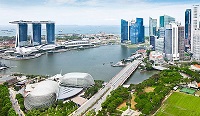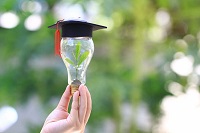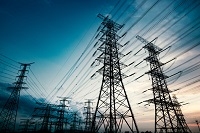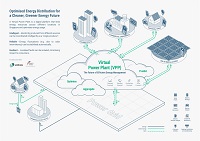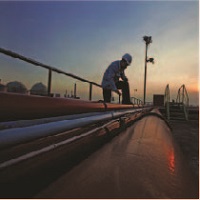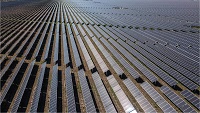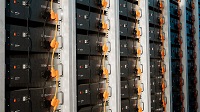For more information, please refer to:
Mr Yorihisa Shiokawa, Managing Director of Panasonic Asia Pacific,
Distinguished guests,
Ladies and Gentlemen,
Introduction
Good morning. I am glad to be here at the Panasonic Eco-ideas forum. This is an important initiative to facilitate an exchange of ideas, and to encourage stronger public-private partnerships on promoting energy efficiency. We are therefore very pleased that Panasonic has chosen to hold this Forum together with the Singapore International Energy Week or SIEW for short.
SIEW has grown from strength to strength since its inaugural run in 2008, so this is now the fourth year we are running this event, and is now one of Asia’s leading platforms for policymakers, business leaders and academics to discuss energy issues, strategies and solutions. I would like to extend my appreciation to Panasonic for their strong support and generous platinum-level sponsorship for the event. Such partnerships with the industry are key to making SIEW, one of the premier energy events in Asia.
The Benefits of Energy Efficiency
Let me now talk about the issue of energy efficiency. In the late 1970s, physicist Amory Lovins popularized the notion of "megawatts" — the idea of meeting energy needs by improving efficiency rather than increasing energy production. More recently, energy efficiency has been termed the "fifth fuel", in recognition of its national security benefit in reducing energy
imports and slowing down the rate at which domestic energy resources are being depleted. No matter what it is called, it is clear that energy efficiency can play an important role to help reduce energy consumption and to lower carbon emissions, which will in turn lead to cost savings for consumers.
The benefits of energy efficiency are well-summarised by President Obama, who said that: "One of the fastest, easiest, and cheapest way to make our economy stronger and cleaner is to make our economy more efficient." Many people would agree that energy efficiency brings benefits. However, the experiences of many countries show that there is often a gap between recognising the benefits of energy efficiency and realising these benefits in practice. So clearly, more work is required if we want to achieve concrete progress in this area.
Making Energy Efficiency Work
I will now share with you a couple of examples of how some countries have embarked on efforts to promote energy efficiency improvements across different sectors, starting with the US Department of Energy. They asked a simple but critical question, "Why aren’t people doing more to conserve energy?" If it’s so obvious there are benefits, why aren’t people conserving energy? They found that it is not enough to simply raise public awareness about energy efficiency, or to rely only on economic incentives and technologies. To achieve a sustainable change in behaviours, energy efficiency measures needed to be more human-centric, so that consumers can relate to these initiatives at a deeper and more emotionally resonant level.
Over in Europe, the Swiss came up with the idea of the "2,000-Watt Society", to reduce per capita energy use from the current level of 5,000 watts per year to no more than 2,000 watts per year by 2050. The challenge is to do this without lowering standards of living. A very ambitious target because you need to do this without lowering standards of living. This again requires policy makers to have a good understanding of how businesses and households would respond to different energy efficiency initiatives, and to factor these into the design of the initiatives to maximise their chances of achieving a sustained change in consumer behaviours.
In China, government leaders have paid close attention to improving the country’s energy efficiency. Partly because China has a very huge growing energy demand and I think energy is a top priority to the country. In a 2007 speech, Premier Wen Jiabao called on government agencies, businesses and consumers to "Attach Greater Importance, Pay Close Attention to Implementation, and Further Strengthen Energy Conservation and Emission Reduction." This emphasis on energy efficiency was reinforced in the Twelfth Five Year Plan adopted earlier this year. One area which China has been focusing on in recent years is the development of eco-friendly cities through the use of smart urban planning, clean technologies and other measures to provide a clean living environment which has low-energy intensity and low-carbon emissions. China and Singapore are working on the Tianjin Eco-City. This is a good example of one such community. It brings together expertise from China, Singapore and other countries, and from both public and private sectors. So I am pleased to note that Panasonic is one of the companies which is actively involved in this project in the provision of green technologies and clean energy solutions for the Tianjin Eco-City project.
Another excellent example which we can all learn from is Japan, which presents a very interesting case study as it has a well-established culture of encouraging energy conservation and efficiency since the 1970s. The oil crisis in those days convinced many of the Japanese people that energy efficiency is important to enhancing Japan’s energy security. Hence, they were prepared to support energy conservation efforts despite having to go through some inconveniences and sacrifices in their lifestyles, in their work arrangements and this commitment to energy efficiency was put to the test recently after the Fukushima incident and the very big earthquake and tsunami, that we saw in March this year, and Japan has passed with flying colours.
A movement called "setsuden" (which means "power saving" in Japanese) began to spread and garnered support from businesses and households to reduce their electricity consumption, especially during the summer months. Large power users were required to reduce their peak consumption by 15 per cent. Industries, offices and households turned their lights off and turned their thermostats up. I was told the air-condititioning was set at 28.0 degrees celcius in Japan. Office workers traded suits and ties for more informal and comfortable attire – something which we perhaps should perhaps consider for future SIEW events. Workers moved their shifts to early mornings and weekends, climbed stairs instead of taking lifts and they worked by the dim glow of computer screens and LED lamps. Families stopped doing laundry every day; while department stores and subway stations turned off the air-conditioning during certain periods of the day. I am not sure if these measures can be successfully implemented in other societies without causing a lot of public unhappiness, but the Japanese example is certainly one which all of us can admire and learn from.
Energy Efficiency – the Way Forward
Indeed, there is much we can learn from one another in the area of energy efficiency. This is an area where there can be a lot of win-win partnerships. In many developing countries which are going through rapid development and urbanisation, there is plenty of scope for governments, businesses and consumers to focus on achieving energy efficiency improvements through clever design and smart use of technology. It is important to do this actually right from the start, as it is often less costly and more convenient to implement the energy efficiency measures during the planning and construction stage, rather than to go through subsequent retrofitting.
It is also important to focus on capacity building to support the energy efficiency initiatives. Because in many of these developing countries, you need also a trained workforce to be able to implement and maintain energy efficiency measures. International cooperation would enable the sharing of best practices and expertise to build up knowledge in energy efficiency amongst the developing countries. The United Nations Environment Program (UNEP) has initiated a Cleaner Production-Energy Efficiency Project to help some 47 developing countries establish a systematic framework for improving the energy efficiency of their industrial sectors. The Energy Conservation Centre of Japan has also played an instrumental role in promoting energy efficiency to other Asian countries. It regularly hosts training visits and actively shares its publications on energy efficiency best practices. These are useful efforts which we should commend, and also to encourage companies in the region to make good use of the available resources and opportunities.
Conclusion
Let me conclude by wishing all participants a fruitful and vibrant discussion this morning. I hope all of you will be able to join us at the next SIEW. which is from 5th to the 9th of November 2012, to be part of this growing dialogue on global energy issues. Thank you very much.
